While I was working on the Lady and the Gentleman cards I had a maggot in my skull constantly nagging at my brain: the necessity for a gender-neutral card. There are numerous philosophical and anthropological reasons for this consideration. Our society is increasingly polarized around opposing concepts, such as good and evil, right and wrong, male and female, left and right, and more. However, as I continually emphasize through my artistic endeavours, the world is not merely black and white; it is imbued with countless shades and complexities. We should strive to move beyond binary perspectives and appreciate the beautiful intricacies of our existence. Therefore, I consciously avoided centring this new deck on one of the most significant of these dichotomies: male/female.
Across history, cultures have painted a vibrant spectrum of definitions, roles, and rules for genders, revealing a world far richer than the binary. My immersion in Latin and Ancient Greek unveiled a captivating tapestry of interpretations. Each culture, like a hand holding a coloured lens, filters reality through its unique perspective. The truly fascinating aspect lies in the continual exchange of these lenses, allowing us to witness the same world through a kaleidoscope of viewpoints. What was once considered paramount could undergo a dramatic metamorphosis.
The Romans, for instance, viewed the sexual fluidity embraced by the Greeks with suspicion. They saw it as a deviation from their cherished Mos Maiorum, the ancestral customs that embodied Roman virtues. One could argue, however, that the Romans themselves were rather inflexible in their attachment to this idealized past!
Conversely, the Greeks deemed the Romans, and indeed everyone else, to be barbaric. They used the term "βᾰ́ρβᾰρος" (bárbaros), an onomatopoeic word for the sounds they perceived as incomprehensible gibberish when foreigners attempted to speak Greek, akin to our modern "blah blah."
The Greeks held a special disdain for the Persians, however. They considered their men not manly enough due to their elaborate grooming practices and fondness for jewelry.
The Skeleton Card
Coming back form this Pindaric flight, I realized the need for a card that challenged the rigid male/female binary. In a card reading, the person's gender often matters less than the symbolism they embody. Therefore, I created the Skeleton (an extra card, currently unnumbered and unsuited).
Skeletons themselves aren't truly gender-neutral, as their features can differ based on sex. However, I opted for a whimsical illustration – a skeleton that embraces ambiguity, allowing for individual interpretation.
During the creation process, I sketched skeletons in various poses, searching for one that would imbue the card with additional meaning. As I contemplated these options, a familiar melody danced into my mind - the haunting strains of "La Danse Macabre" by Camille Saint-Saëns. Eureka! It was the perfect inspiration - a dancing skeleton, a marvellous historical reference brimming with symbolism.
When I craft my deck, I always adhere to a set of guiding principles that illuminate my creative path: every element I draw must carry meaning, with each detail of the illustration contributing to the overall significance of the card. I find no satisfaction in a deck that merely showcases beauty without substance.
Let’s Dance a Totentanz
"La Danse Macabre", or the Dance of Death (Totentanz in the German world), was a ubiquitous theme during the Middle Ages. It served as a powerful allegory, emphasizing the universality of death. Though interpretations varied, the theme typically featured Death dancing with a range of figures, from peasants to emperors symbolizing wealth and power, all gathered around an empty tomb. It was a poignant memento mori, a reminder of life's impermanence and the fleeting nature of earthly glory.
The 14th century was a period of immense hardship in Europe. Recurring famines, the Hundred Years' War in France, and above all, the Black Death, left an indelible mark on the cultural psyche. The ever-present threat of sudden and agonizing death fuelled a heightened religious fervour for penance. However, it also sparked a desperate desire for a final moment of joy – a last dance before the inevitable doom. The Danse Macabre embodied this duality, serving both as a didactic dialogue poem urging people to prepare for death, and a stark reminder of life's fleeting pleasures.
And so, my dear fellow Crypt dwellers, this is how a card comes to be. I've unearthed a card brimming with layers of different meaning—an abyss whose exploration rivals that of an encyclopedia! :)
click here to listen to
Heidelberg's Blockbook
In the university library of Heidelberg there's an old book from 1455-1458, which is really 7 little block books that have been bound into one. One of these 7 booklets is considered the world's oldest printed dance of death.
Bishop
Death
“Your dignity and honour have turned wrong,
Mr. Bishop, wise and well learned.
I will draw you to the dance,
where you cannot flee Death.”Bishop
“I have been worthily honoured
while I lived in a bishop's office.
Now the misshapen are drawing me
to Death as a monkey.”
The Knight
Death:
“Mr. Knight, you have been written down
that you must now practice chivalry
with Death and his servants.
It helps you neither to jest nor fight.”The Knight:
”I have - as a stern knight -
served the world well with noble mind.
Now I have - against knights' order -
become coerced to this dance.”
Until next time,
Memento, homo, quia pulvis es, et in pulverem reverteris.
(Remember, man, that thou art dust, and to dust thou shalt return.)
Andrea

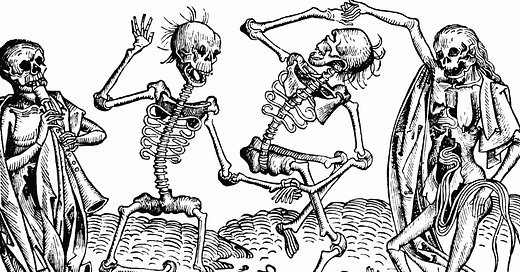


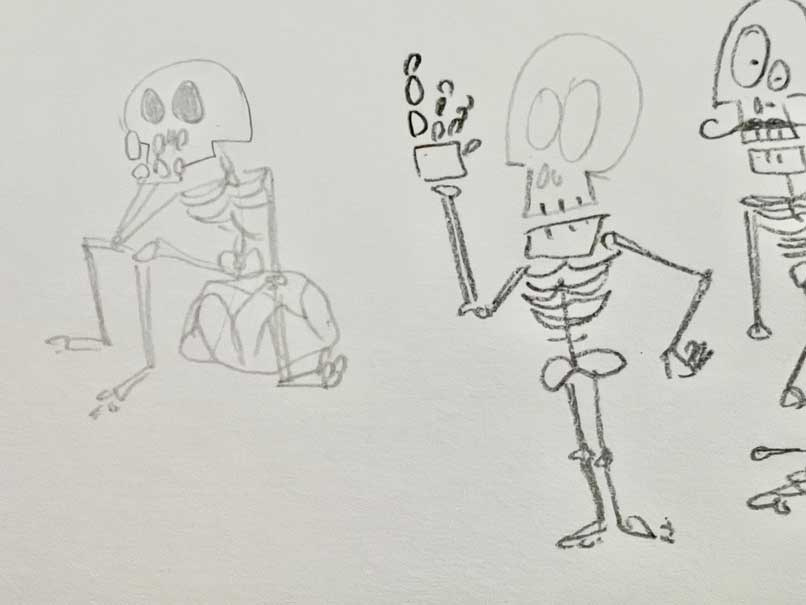
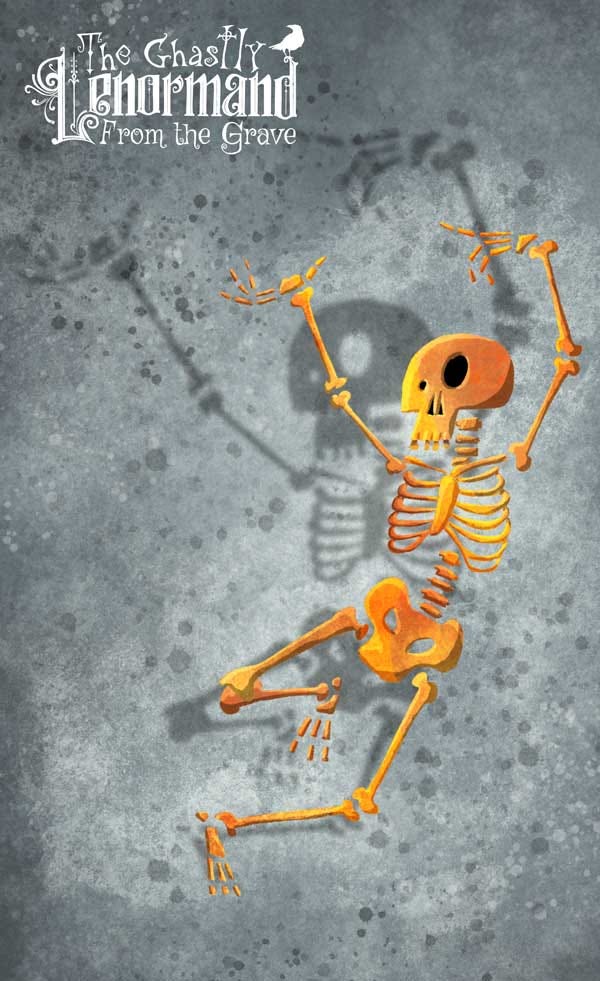


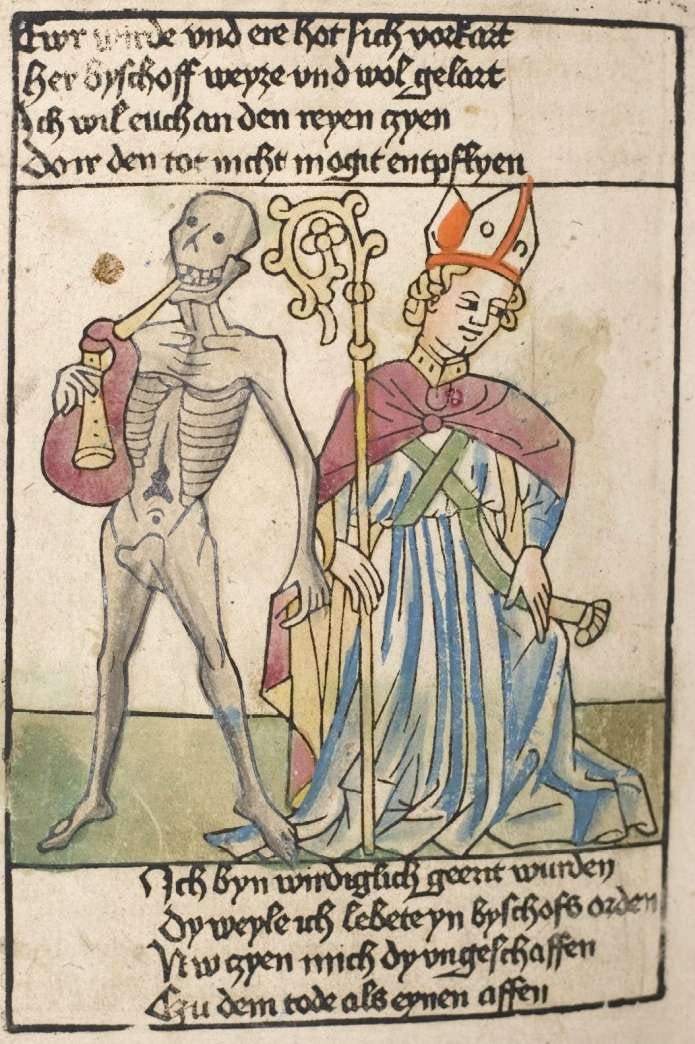
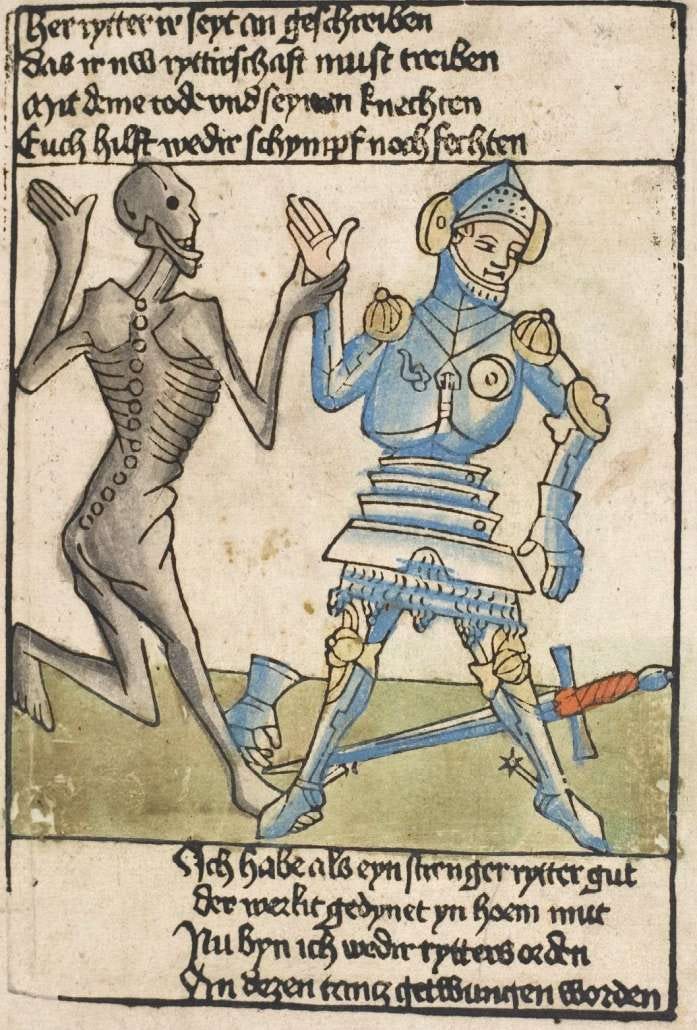
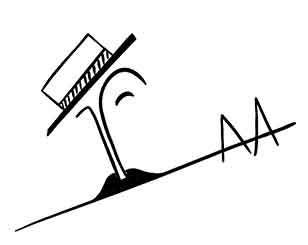
It is another world to think of—and to see—a skeleton dancing! (And thank you for such an in-depth post!)